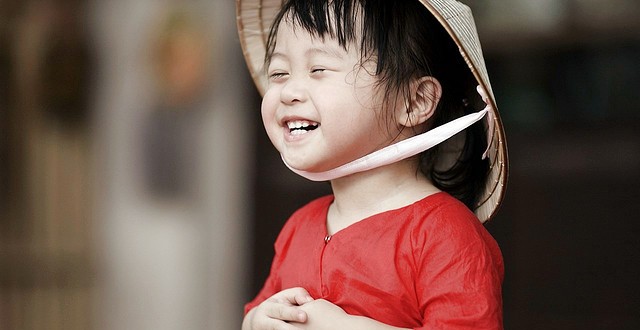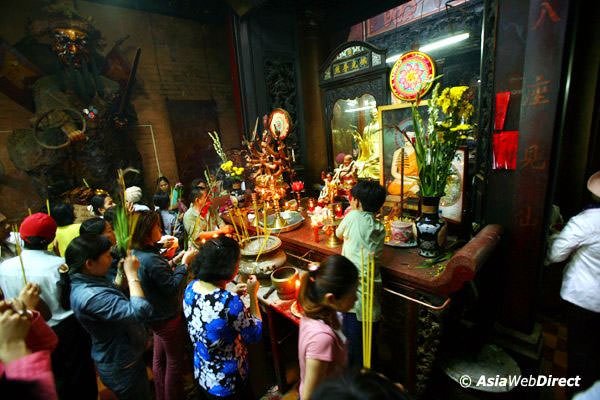Vietnam's people are a special mix of cultures, languages and historical backgrounds. The one common denominator amongst them is that, as in most Southeast Asia countries, they love to smile and are genuinly interested in foreign visitors. The new generation of Vietnamese are largely unfamiliar with the devastation the country suffered years ago and should be approached thus. Enjoy your visit to this charming land.

The origins of the Vietnamese people are a combination of the Mongol races of north and east Asia, with Chinese and Indian influences. The population is surpassed only by Indonesia as Southeast Asia's most heavily populated country. However, Vietnam is the region's most ethnically homogenous country with the Vietnamese making up about 90% of the population. 85% of Vietnam's ethnic-minority population belongs to indigenous groups - the largest of which are Thai and Hmong - who have been settled in the mountainous regions of the country for many centuries. About 3% of the population is ethnic Chinese living in the urban centres of the South.

Vietnamese Language Vietnamese language reflects the country's unique mix of racial and cultural origins, with its fusion of monotonic Mon-Khmer, and Tai tonality and grammar. Having been a Chinese province for over a millenium (111 BC-939 AD), most of the country's governmental, literary, and technical vocabulary comes from the Chinese language. Though a writing system called Chunom, using partly modified Chinese characters, was developed in the 8th century. It was a French missionary in the mid-17th century who developed a system of spelling using the Roman alphabet that employed additional signs and several accents to indicate the tones. The use of this script spread and it was made the official written language by the French in 1910. Called Quoc-ngu or national language, it is now universally learned and written by all Vietnamese. Religion With ten million followers and 20,000 pagodas, Buddhism is undoubtedly the largest established religion, however Vietnam has a rich and wide variety of religions based on imported faiths and popular beliefs, with several indigenous groups embracing animism, theism and ancestor worship. Catholicism, introduced by European missionaries, is the second largest religion, with about six million followers, and more than 6,000 churches. Vietnam's indigenous religions, including the Cao Dai and Hoa Hao sects, have their holy lands in the city of Tay Ninh and the provinces of Chau Doc and An Giang in the Mekong Delta. They peacefully coexist with one another and have contributed to the struggle against foreign aggression through the Vietnam Fatherland Front. Visitors entering Buddhist pagodas are expected to remove their shoes and it is considered impolite to point feet, especially the soles, at people or statues of the Buddha. Donations to the upkeep of temples are not expected, but are received gratefully. Permission should be asked before taking photographs of people or in places of worship. Social The most appropriate manner of greeting is a gentle handshake and a smile. Though occasionally rigid, Vietnamese officials - such as the police - appreciate being treated in a firm, yet diplomatic manner. It is best to deal with misunderstandings with patience and good humour. Local people who offer assistance appreciate small gifts such as cigarette lighters, pens, foreign cigarettes, liquor, perfume and even shampoo. However, giving money to street beggars can lead to mob scenes as other beggars also attempt to impose upon such generosity.
@arifulsms
Downvoting a post can decrease pending rewards and make it less visible. Common reasons:
Submit
Hi! I am a robot. I just upvoted you! I found similar content that readers might be interested in:
http://www.vietnam-guide.com/people.htm
Downvoting a post can decrease pending rewards and make it less visible. Common reasons:
Submit